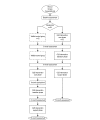Weight Loss After Stroke Through an Intensive Lifestyle Intervention (Group Lifestyle Balance-Cerebrovascular Accident): Protocol for a Randomized Controlled Trial
- PMID: 31628790
- PMCID: PMC7010352
- DOI: 10.2196/14338
Weight Loss After Stroke Through an Intensive Lifestyle Intervention (Group Lifestyle Balance-Cerebrovascular Accident): Protocol for a Randomized Controlled Trial
Abstract
Background: Weight gain can be a consequence of stroke, or cerebrovascular accident (CVA), because of impaired mobility, behavioral and emotional disorders, and sensory losses. Weight gain increases the patient's risk of recurrent stroke and chronic diseases, such as diabetes, metabolic syndrome, and pulmonary and heart disease. Approaches to weight loss in this population are lacking, although necessary because of the unique physiological and cognitive needs of persons after a stroke. Evidence shows that intensive behavioral therapy interventions that address both physical activity and diet offer the greatest potential for weight loss. The Group Lifestyle Balance (GLB) intervention is a 12-month, evidence-based weight loss program that has been used extensively with the general population; this program was modified to meet the needs of people who have had a stroke (GLB-CVA).
Objective: This randomized controlled trial (RCT) aims to examine the efficacy of the GLB-CVA on weight and secondary outcomes, compared with that of a waitlist control group.
Methods: This RCT will enroll and randomize 64 patients over an 18-month period.
Results: Currently, 51 people are waitlisted, with 23 out of 51 screened and 16 out of 23 eligible.
Conclusions: It is anticipated that the findings from this RCT will contribute to the evidence base regarding weight loss strategies for people living with stroke.
Clinical trial: ClinicalTrials.gov NCT03873467; https://clinicaltrials.gov/ct2/show/NCT03873467.
Keywords: cerebrovascular accident; eating; physical activity; rehabilitation; weight loss.
©Simon Driver, Chad Swank, Katherine Froehlich-Grobe, Evan McShan, Stephanie Calhoun, Monica Bennett. Originally published in JMIR Research Protocols (http://www.researchprotocols.org), 18.10.2019.
Conflict of interest statement
Conflicts of Interest: None declared.
Figures
References
-
- Ovbiagele B, Goldstein LB, Higashida RT, Howard VJ, Johnston SC, Khavjou OA, Lackland DT, Lichtman JH, Mohl S, Sacco RL, Saver JL, Trogdon JG, American Heart Association Advocacy Coordinating Committee and Stroke Council Forecasting the future of stroke in the United States: a policy statement from the American Heart Association and American Stroke Association. Stroke. 2013 Aug;44(8):2361–75. doi: 10.1161/STR.0b013e31829734f2. - DOI - PubMed
-
- Vahlberg B, Zetterberg L, Lindmark B, Hellström K, Cederholm T. Functional performance, nutritional status, and body composition in ambulant community-dwelling individuals 1-3 years after suffering from a cerebral infarction or intracerebral bleeding. BMC Geriatr. 2016 Feb 19;16:48. doi: 10.1186/s12877-016-0226-1. https://bmcgeriatr.biomedcentral.com/articles/10.1186/s12877-016-0226-1 - DOI - DOI - PMC - PubMed
-
- Global Burden of Metabolic Risk Factors for Chronic Diseases Collaboration (BMI Mediated Effects) Lu Y, Hajifathalian K, Ezzati M, Woodward M, Rimm EB, Danaei G. Metabolic mediators of the effects of body-mass index, overweight, and obesity on coronary heart disease and stroke: a pooled analysis of 97 prospective cohorts with 1.8 million participants. Lancet. 2014 Mar 15;383(9921):970–83. doi: 10.1016/S0140-6736(13)61836-X. http://europepmc.org/abstract/MED/24269108 - DOI - PMC - PubMed
-
- Froehlich-Grobe K, Lollar D. Obesity and disability: time to act. Am J Prev Med. 2011 Nov;41(5):541–5. doi: 10.1016/j.amepre.2011.07.015. http://europepmc.org/abstract/MED/22011427 - DOI - PMC - PubMed
Associated data
LinkOut - more resources
Full Text Sources
Medical


